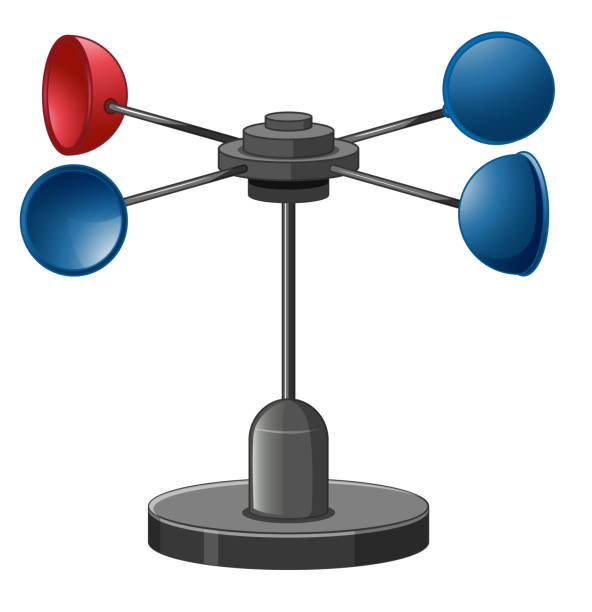Expert Tips for Calibrating Your Anemometer for Ideal Efficiency
Expert Tips for Calibrating Your Anemometer for Ideal Efficiency
Blog Article
Discovering the Features and Advantages of Anemometers for Climate Fanatics and Specialists
From mug anemometers to sonic anemometers, each type brings its unique collection of applications and benefits, dropping light on various facets of atmospheric problems. As we dig into the features and benefits of anemometers, a much deeper understanding emerges not just of prevailing weather sensations however also of the more comprehensive ramifications for sectors like wind energy production and environmental study.
Significance of Anemometers in Weather Condition Monitoring
Anemometers play an essential role in weather condition monitoring by giving precise dimensions of wind speed, assisting in forecasting and understanding weather condition patterns. These tools, ranging from typical cup anemometers to modern-day ultrasonic anemometers, are crucial for meteorologists, scientists, and weather condition fanatics alike. By measuring wind rate, anemometers aid in figuring out the strength of weather sensations such as tornados, tornadoes, and typhoons. In addition, they provide useful information for aeronautics, maritime operations, and various markets that are delicate to wind problems.

Kinds of Anemometers and Their Applications
The most usual types of anemometers consist of cup anemometers, vane anemometers, hot-wire anemometers, and ultrasonic anemometers. Mug anemometers consist of 3 or 4 cups installed on horizontal arms that turn with the wind, measuring its rate. Vane anemometers, on the various other hand, utilize a freely revolving vane to align with the wind instructions, providing both wind speed and instructions measurements.
Each sort of anemometer has its special benefits and applications. Cup anemometers are suitable and durable for basic weather condition monitoring, while vane anemometers are favored for directional dimensions. Hot-wire anemometers are sensitive to low air speeds, making them perfect for interior environments. Ultrasonic anemometers are non-intrusive and use high accuracy, typically made use of in research and specialized weather condition surveillance applications. Comprehending the attributes and applications of each kind of anemometer is crucial for selecting one of the most ideal instrument for certain weather condition keeping an eye on needs.
Benefits of Utilizing Anemometers in Projecting
In meteorology, the usage of anemometers provides indispensable advantages for enhancing the accuracy of climate projecting. Anemometers gauge wind rate and direction, providing essential data for forecasting climate patterns. By integrating wind data right into projecting designs, meteorologists can better recognize the activity of weather condition systems, anticipate changes in weather, and issue more specific forecasts.
Moreover, anemometers play an essential function in evaluating potential climate dangers. Keeping track of wind rates assists forecasters predict extreme weather occasions such as cyclones, tornadoes, and winter months storms with better accuracy. This very early warning system makes it possible for authorities to provide timely informs and execute essential precaution, minimizing the risks to life and property.
In addition, anemometers assist in enhancing renewable energy manufacturing. By evaluating wind patterns, meteorologists can recognize suitable areas for wind farms and anticipate power output, adding to the reliable more tips here generation of wind power.

Anemometers in Wind Energy Manufacturing
Offered the critical role anemometers play in offering precise wind information for climate projecting and hazard evaluation, their relevance encompasses the world of wind power manufacturing. Anemometers are vital tools in the area of wind power, where the measurement of wind speed and direction is important for establishing the usefulness and efficiency of wind turbine installations. By precisely determining wind rates at differing elevations, anemometers assist maximize the placement and design of wind generators to optimize power output.
In wind ranches, anemometers are purposefully placed to collect real-time wind information that is made use of to analyze the possible power manufacturing of a site. This data is important in identifying the economic viability of wind power tasks and in forecasting energy generation to ensure grid security. Furthermore, anemometers aid in keeping an eye on wind conditions to optimize generator efficiency, avoid damage from high winds, and make certain the safety and security of workers working in the location of wind generators.
Enhancing Weather Condition Understanding With Anemometers

Anemometers play an essential role in enhancing our understanding of microclimates. These localized climate condition can differ dramatically from more comprehensive local forecasts, making it necessary to have accurate data for specific locations. anemometer. By purposefully placing anemometers in various areas, scientists can gather comprehensive information on just how wind acts in different surfaces, city atmospheres, or bodies of water
Furthermore, anemometers add to boosting weather condition forecasting versions by supplying real-time data on wind actions. This info is especially valuable for forecasting serious weather occasions, enhancing farming methods, and supporting sectors investigate this site like air travel and maritime navigating. Generally, anemometers are important tools that enable us to dive deeper right into the complexities of weather systems, eventually leading to even more accurate forecasts and better-informed decisions.
Conclusion
In conclusion, anemometers play a vital duty in weather tracking and projecting by gauging wind speed and direction. Anemometers likewise have applications in wind power manufacturing, more highlighting their value in both meteorology and renewable energy markets.
From mug anemometers to sonic anemometers, each kind brings its one-of-a-kind collection of applications and advantages, shedding light on various aspects of atmospheric conditions. These instruments, ranging from conventional cup anemometers to contemporary ultrasonic anemometers, are necessary for meteorologists, scientists, and this post weather condition fanatics alike. The most usual kinds of anemometers consist of cup anemometers, vane anemometers, hot-wire anemometers, and ultrasonic anemometers. Cup anemometers are appropriate and robust for general weather monitoring, while vane anemometers are favored for directional dimensions. Anemometers are essential tools in the area of wind power, where the dimension of wind speed and direction is essential for figuring out the expediency and effectiveness of wind turbine installations.
Report this page